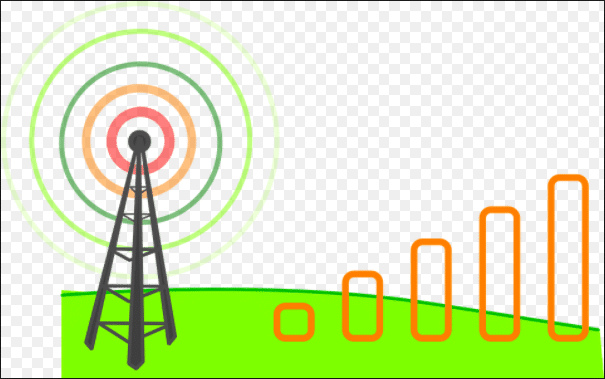Every time I speak with an IoT solution creator in the country, all I generally get to hear are their tales of struggle and worries on reaching out to an appropriate IoT connectivity and management solution provider. “It is difficult to spot a suitable telecom provider and the connectivity and management solutions that it provides towards IoT in India,” say a majority of the entrepreneurs working on IoT driven solutions.
EFY conducted a brief research on the IoT connectivity and management solutions offered by telecoms in India at present. With the valuable feedbacks from our readers we eventually will add on and modify the basic content of the story. Hopefully, this article will be able to give you some idea on how telecoms are enabling India’s drive towards IoT.
Cellular or LPWAN for IoT?
India as of now has two kinds of IoT connectivity – wireless cellular and Low Power Wide Area Network (LPWAN). Wireless cellular standard has been widely used in the country for mobile connectivity and is primarily being used for IoT connectivity in India now.
Wireless cellular has evolved from its 2G (GSM), 3G (GSM/CDMA) ranges of technology to 4G (LTE) and is gradually moving towards 5G in India (by 2020) for meeting the increasing machine to machine (M2M) connectivity requirements as needed for the IoT market.
Narrow Band IoT (NBIoT) – an ‘industrial grade’ Low Power Wide Area Network (LPWAN) solution runs on licensed spectrum and guarantees quality of service and a future-proofed capability. It has been developed to enable efficient communication and long battery life for mass distributed devices across wide geographical footprints and deep within urban infrastructure.
It has low device cost and compatibility with existing cellular network infrastructure with the same level of security as cellular LTE. Also, it inherits LTE’s authentication and encryption. NB-IoT mutually authenticates the network and the device, and encrypts traffic between the device and deep within the core network.
LPWAN covers a wide area range of 5km to 40km and the distance between its final nodes and gateway can be as much as 10 km. Also, power consumption for LPWAN is ultralow, thereby providing more life to batteries that can last much longer compared to wireless cellular. IoT data pockets have low throughput requirements – best offered by LPWAN.
LoRa, a kind of LPWAN technology, can easily overcome high power consumption challenge and has an unprecedented reach, both underground and underwater. Its ultra-low power consumption allows the battery in a connected device last for more than a decade without any need for replacement.
Vodafone offers rental free package of 50 IoT Sims
If you are planning to flag off your own startup and working on IoT driven solutions, Vodafone’s Ready Start-up Kit launched last year can be of help. It offers rental free package for 50 IoT Sims for over a period of six months to help start-ups develop and deploy their solutions. Not just that, you will also get a complimentary access to its IoT Managed Connectivity Platform.
The IoT Managed Connectivity Platform enables you manage connectivity along with empowering you to control visibility and manageability of assets. It helps you by curbing your operational costs, securing end to end transactions with private APN services and enabling better management of these Sims.
Vodafone India is known for its cellular IoT connectivity in the country at present. The technologies involved in Vodafone’s wireless IoT cellular connectivity ranges from GSM (2G/3G) to Long Term Evolution – LTE (4G). In addition to cellular connectivity, it is working on certain technologies to fulfill LPWAN connectivity requirements.
SuperIoT is Vodafone’s suite of end-to-end IoT solutions that span devices, connectivity, data platform, application enablement platform and support. It currently offers use cases in asset tracking (fixed and mobile), people safety (employee tracking and student tracking in-transit) and vehicle tracking.
Vodafone is also gearing up for NBIot in India. Once Vodafone’s NBIoT global pilots in Germany, Spain, Ireland and Netherlands are successfully deployed, Vodafone will launch NBIoT connectivity in India.
Airtel has great news for global enterprises, OEMs
If you are a global enterprise or an original equipment manufacturer (OEM) and looking for an expansion in India, you can seek help of Airtel’s Connectivity Management Platform – a one-stop solution for all IoT connectivity needs. This platform enables users manage their IOT Sim cards easily.
Keeping in mind India’s immense drive towards IoT, Bharti Airtel has rolled out M2M Sims based on a range of cellular technologies – GSM (2G,3G), LTE(4G), TD-LTE, GPRS, EDGE, HSPA+, HSDPA, UMTS through MATES – Mobile Application Tools for Enterprises. It is an integrated telecom-IT application focusing on fleet tracking, remote working, digital signage, telehealth, telematics, asset management and mobile payment.
Airtel is now looking towards intensifying its cellular 5G font to roll out better IoT connectivity in the country. After a pact with Nokia last year, it has recently tied up with Ericsson for a strategic roadmap of connectivity expansion in India meeting the standards of 5G technology.
Apart from providing existing IoT connectivity based on cellular technologies and IoT solutions, Airtel is now working on making an entry into home automation sector by using its IoT and M2M solutions.
NBIoT for Mumbai, thanks Reliance Jio
For Mumbai based IoT solution creators, there is great news. You can now have an access to Reliance Jio’s commercial NBIoT connectivity, launched in February, this year. The rest of India need not worry as Jio is expected to extend its NBIoT network across the nation soon.
It had partnered with Samsung last year to deploy cellular connectivity and has already covered a majority of Indian customers through its Long Term Evolution (LTE-4G) cellular connectivity at present.
Emphasising first on enterprises and industries to rein in IoT, Jio is on talking terms with car manufacturers and consumer durable companies to make an entry into consumer and IoT sector as well.
Reliance’s UNLIMIT to meet all IoT needs
Looking for a committed platform of IoT connectivity and solutions? Anil Ambani driven Reliance’s UNLIMIT can be of help. It is a Cisco Jasper cloud based connectivity platform solely committed towards expansion of IoT in India and has deployed wireless cellular LTE (4G) connectivity for IoT along with GSM (2G) connectivity for enterprises.
Its UNLIMIT Enablement ensuring easy deployment of cloud based IoT applications focuses on providing IoT applications in several areas like automotive, transport and logistics, utilities, industrial automation, banking, financial services and insurance (BFSI) and healthcare.
UNLIMIT has also joined hands with IBM for co-creating IoT solutions to enhance industry sectors including automotive, insurance, utilities and industrial automation.
User based insurance, asset and vehicle tracking, tower monitoring and transformer maintenance are certain segments that have benefitted from UNLIMIT’s IoT applications.
Get Idea on IoT connectivity via Idea’s 4G
Idea Cellular can be another choice for you with its cellular LTE (4G) connectivity towards IoT at present.
It is also taking baby steps right now to flag off its cellular 5G venture for providing better network towards IoT in India. Idea will shortly invest in advanced antenna technology like Massive Mimo as well as in Cloud for an enhanced 5G aided IoT connectivity in the country.
Idea Cellular’s upcoming tie-up with Vodafone India would enhance expansion of wireless 4G,4G+, 5G broadband services for offering quality IoT network in the country.
Need dual radio connectivity? Sigfox has it for you
What if you want to enjoy benefits of cellular connectivity along with that of Low Power Wide Area Network (LPWAN)? Sigfox is at your service with its dual radio solution for IoT connectivity in India.
Apart from providing both LPWAN Sigfox technology / NBIoTand cellular LTE-M connectivity separately, it has, with a chip designing company, come up with its hybrid connectivity solution enabling customers make use of the advantages of both cellular and LPWAN connectivity.
With a base station specifically designed for India offering connectivity, Sigfox also provides IoT consultancy for all stakeholders in IoT eco-structure empowering them to make appropriate decision regarding implementing IoT.
Tata Communications to gift LoRa to 100 new cities
Tata Communications, formerly known as Videsh Sanchar Nigam Limited (VSNL) and got pulled under Tata Group in 2002, is all set to roll out IoT network in India using LoRa- a kind of Low Power Wide Area Network (LPWAN) technology. While it has already deployed LoRa based IoT network in 38 Indian cities last year, this year, Tata Communications would cover 100 more Indian cities under LoRa network for IoT.
It is heading towards spanning nearly 2,000 communities and over 400 million lives through its IoT network that would bring together devices, applications and other IoT solutions to create an India-wide mesh of smart buildings, campuses, utility sites, fleet management systems, security and healthcare services.
Tata Communication’s IoT network will act as the foundation for applications which, when connected to powerful cloud computing platforms will enable real-time big data analytics based on the huge volumes of data gathered by millions of IoT-enabled sensors.
BSNL getting set for IoT in rural India
The state run telco has taken several steps towards launching IoT connectivity and solutions in India last year. It all began with BSNL signing a memorandum of understanding (MoU) with Nokia at World Mobile Congress, 2017 for a gradual shift to enhanced 5G connectivity for supporting IoT network in India.
This agreement was followed by BSNL getting into another memorandum of understanding (MoU) with Coriant for leveraging 5G and IoT in the country.
Not just these, BSNL has tied up with Aeris Communications to offer packaged IoT solutions and services for enterprises, small and medium scale businesses and public sector undertakings with an aim of not restricting IoT to urban areas but also enabling IoT penetration in rural and remote India.
Major telecoms and their IoT connectivity solutions at a glance
| Serial Number | Telecom | Present Connectivity | Future Connectivity |
| 1 | Vodafone | Cellular GSM (2G/3G), LTE (4G)/LPWAN (not as extensive as cellular) | NBIoT |
| 2 | Bharti Airtel | Cellular GSM (2G,3G), LTE(4G), TD-LTE, GPRS, EDGE, HSPA+, HSDPA, UMTS | Cellular 5G |
| 3 | Reliance Jio | Cellular LTE 4G, NBIoT | NBIoT |
| 4 | Reliance Unlimit | Cellular GSM (2G), LTE (4G) | NA |
| 5 | Idea Cellular | Cellular LTE 4G | Cellular 4G/4G+/5G |
| 6 | Sigfox | Cellular LTE-M, NBIoT/ Sigfox/ dual connectivity | Cellular/ LPWAN/dual connectivity |
| 7 | Tata Communications | LPWAN- LoRa | LPWAN-LoRa |
| 8 | BSNL | NA | Cellular 5G |
A test for telcos – Users place feed-backs
Although major telecom players have introduced cellular IoT connectivity in the country at present, it is not adequate for the IoT solution creators to keep pace with their global competitors, say the current users of IoT connectivity in India.
The quality of existing cellular connectivity is not at its best now. While few telecom providers have already begun working on improving the network structure, the creators are facing difficulties till the connectivity structure is made efficient.
Stressing on the fact that network providers should start implementing NBIoT solutions, the users said that with cellular network they get restricted to only testing of a particular solution. According to them, NBIoT connectivity is required for production purpose of the same.













